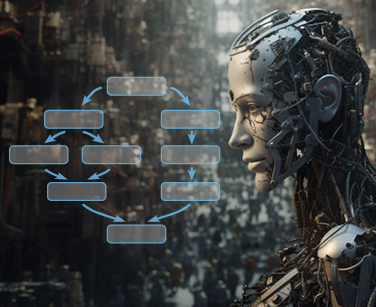How Playtika Achieved AI Automation Customer Service with Apache NiFi – Part 1
By Roberto Marturano & Florian Simond
The Business Logic
Automating efficient Customer Service (CS) is an endeavor fraught with risks where finding the right balance between optimizing the process and maintaining a human, personalized touch is critical to customer satisfaction. Users are already used to the personal touch and appreciate it, so integrating it with an automated process requires an intelligent touch as imperceptible as possible.
Playtika’s Customer Service
Players’ experience is one of our top priorities at Playtika. Given the large number of players (over 30M monthly active users) enjoying our games every day, we take pride in providing high-quality customer service.
One of the key elements in providing the best player experience is the response time for any complaints or queries sent to our Customer Support office. To put it in plain words, the slower the response time, the less satisfied players are.
The extensive database constantly generated by tickets submitted by Playtika game players, coupled with their systematicity, is ideally suited to leverage the ability of Artificial Intelligence (AI) to sift through a large amount of information, analyze it and use the result of this analysis to successfully achieve a set goal.
Playtika’s Customer Support (CS) services handle a significant number of tickets distributed among our games. CS teams are divided between studios, each handling a specific set of games with its own rules and each team with its own internal policies.
The logic behind the AI-assisted solution developed in-house
The AI-assisted solution we developed was constructed to be flexible enough to accommodate each team’s requirements and, at the same time, encompass an array of scenarios covering an extended range. It also had to be easily adapted to new games’ addition and integrate their additional set of rules and new levels.
The combination of Playtika’s sizable number of active users and variety in types of potential tickets means that our service scope is extensive and broadly covers:
- Providing a support solution that enhances the Customer Support agents’ decision-making processes;
- Empowering agents to rapidly resolve technical and data retrieval issues such as looking up players’ activities from multiple data sources;
- Suggesting solutions to assistance requests.
In order to optimize players’ experience, we developed a CS Automation Tool using:
- A predictive Machine Learning (ML) model to identify the received complaints’ intent.
- A NiFi based application to leverage the identified intent and generate suggested responses to the players’ complaints based on the players’ detected intent who sent the complaints.
Part 2 of this article focuses on the technical aspects of developing our CS Automation Tool, especially on the technical challenges we faced.
Maintaining the human-centered approach
Providing optimal and personalized assistance to players is a core tenant of Playtika’s ethics. Maintaining these standards without expanding the size of our CS teams was a central element in opting to remain at the forefront of CS technological development to streamline complaints and queries management with maximal efficiency while maintaining the high quality of human contact.
The humans are sitting at both ends of the CS process. On one side are the players, who initiate the queries and tickets, and on the other end are the CS agents who answer them.
To provide complete and informative answers to players’ queries and tickets, our CS agents often need to access data from various sources. This data retrieval process is time-consuming and repetitive, needlessly slowing down response time.
One of the key elements of developing the AI-assisted CS solution was to automate as much as possible of the data retrieval process, a crucial factor in streamlining the CS agents’ work.
Once in possession of all the necessary data, CS agents can answer the player’s query. May queries and issues are similar, and answers are based on a bank of template answers that the agent can select from and personalize as needed. The selection process is sometimes more time-consuming than crafting a new answer from scratch.
The second capability of AI is to identify the issue reported by the client and offer the CS agent a template answer for that issue. The agent then just has to check that the suggestion is valid and personalize the template answer if it seems beneficial.
The third capability of AI is the ability to identify spam and closed threads, such as a player sending a basic thank you email, and eliminate those messages from the CS agents’ inbox, further streamlining their workload.
The AI-assisted solution we developed addressed all these points.
The Business Results
Once the AI-assisted solution was developed, it was tested for an entire month to compare results with and without integrating that solution.
Bird’s Eye View on the Business Value
The results measured were very positive and brought an unexpected but positive surprise.
To evaluate the AI-Assisted CS’s efficiency, we measured three KPIs and compared the results obtained before testing with those during testing.
The KPIs measured were the Service Line Agreement (SLA) is defined by:
- The percentage of tickets answered within two hours,
- First Time Resolution (FTR) covering the percentage of tickets resolved in a single interaction,
- Customer Satisfaction score (CSAT), binary established by customers rating their CS experience as “Satisfied” or “Unsatisfied”.
An increase in SLA would clearly indicate an improvement in Time to Resolution (TTR), or the time it takes to answer a query and close a ticket fully.
The before-and-after results were more than encouraging:
- The AI-assisted solution drastically increases the percentage of tickets answered within two hours (53.0% → 91.0%).
- Unexpectedly, the AI-assisted solution increased FTR (74.5% → 77.7%).
- The AI-assisted solution marginally improved CSAT (64% → 68%).
In other words, AI significantly increases the pace of ticket resolution and customer satisfaction.
Conclusion
The initial reactions from the test project are overwhelmingly positive from all concerned departments. The CSAT scores were similar, even slightly improved, to those achieved in the regular non-test environment. The FTR rate increased significantly, and the average TTR declined.
The CS agents’ mood benefited from being freed from mind-numbing repetitive tasks and agents appreciated the reduced pressure to abide by the required TTR.
Actually, agents reported that they feel like they have gained a dedicated personal assistant that always smiles and never complains but simply does the job. But do not tell the HR department, no one told them about the new hires 😊
In short, the test team productivity and work satisfaction considerably improved, and the SLA performance was positively impacted.
As the ML knowledge increases when the Automation Tool is deployed to the entire CS department in the near future, we hope to see further refinement in the filtering and suggested answers.







